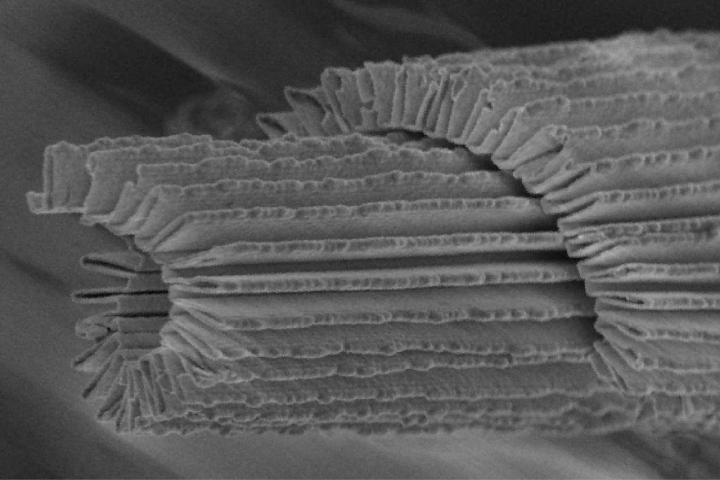
According to a paper published in the journal Material Horizons, researchers from NC State were able to create a transparent, flexible conductor that may make completely flexible electronics a reality.
Inspired by the flexible design of a spring, the researchers first created a three-dimensional polymer mold on a silicon surface. The mold was shaped like a series of identical, evenly spaced rectangles. They then coated the mold with a layer of aluminum-doped zinc oxide, which served as the conducting material. After that, an elastic polymer was applied to the zinc oxide. The researchers then removed the silicon and the mold, and what they obtained was a transparent material with series of symmetrical, zinc oxide ridges on an elastic surface. The resultant material was transparent because both zinc oxide and the polymer are transparent. The ridges of zinc oxide allow the structure to expand and contract, making it stretchable like the bellows of an accordion.
The properties of the material are amazing. It won’t break, even with repeated stretching and folding , and the material also doesn’t lose its electrical conductivity when fully stretched. On top of that, the researchers have suggested that the thickness of zinc oxide ridges can be controlled to give the material different levels of flexibility, transparency, and electrical conductivity.
The development of such flexible conductors could revolutionize the electronics industry. Besides flexible displays, we could even see the technology being used in creating wearable electronic clothes, disposable electronic food wrappers, flexible health gadgets etc. The possibilities are unlimited.


